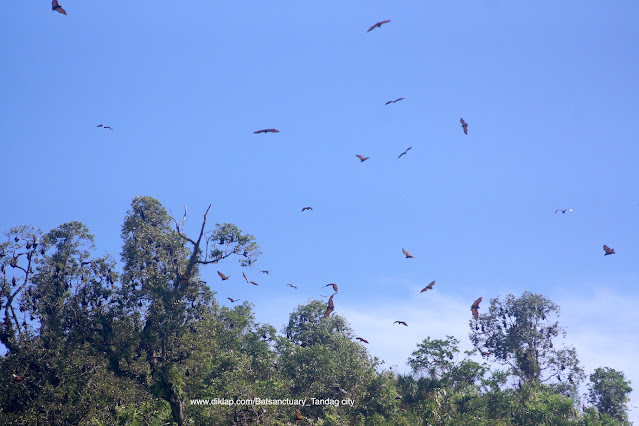Tandag City Bat Sanctuary is a unique and fascinating destination that should be on every nature lover's list. It is a testament to the beauty and diversity of the Philippines' wildlife and a reminder of our responsibility to protect and preserve our natural heritage. Pack your bags, grab your camera, and head to Tandag City Bat Sanctuary to witness the wonders of bats in their natural habitat.
In the heart of Tandag City, Philippines, is a sanctuary home to one of the most misunderstood creatures in the animal kingdom: bats. The Tandag City Bat Sanctuary is a sanctuary that serves as a sanctuary for thousands of bats and is a must-see for those who want to get up close and personal with these fascinating creatures.
The sanctuary covers an area of about 30 hectares and is located on a hill overlooking the bay of Tandag City. It is home to over 2,000 Geoffroy and Rouset flying foxes, also known as 'Flying Foxes', the largest bat in the Philippines. Bats are primarily fruit-eating animals, eating fruits such as bananas, mangoes, and guavas.
Visitors can explore the sanctuary on guided tours available for a small fee. The tour begins with an informative explanation of the importance of bats in the ecosystem and their unique characteristics. The guide also describes the threats these creatures face. B. Habitat loss and hunting, and how protected areas play an important role in their conservation.
The reserve is not only a bat sanctuary but also a biodiversity hotspot. Surrounded by lush vegetation, it is home to various species of birds, insects, and other wildlife. Visitors can go bird watching or take a leisurely stroll along nature trails that lead to scenic views of Tandag City Bay.
One of the highlights of the sanctuary is the appearance of nocturnal bats. When the sun goes down, the bats wake up from their sleep and fly out of their roosts in search of food. Visitors can watch this natural spectacle, with thousands of bats soaring into the sky, creating a surreal experience.
The Tandag City Bat Sanctuary is a model for bat conservation in the Philippines. This is a collaborative effort between local governments and local communities to protect these often misunderstood creatures and their habitats. The reserve also serves as an educational platform to raise awareness of the importance of bats in the ecosystem and their role in pollination and pest control.
A unique habitat for several species of bats, the reserve serves as an important ecological site with many benefits for the environment and local communities.
Tandag Bat Sanctuary is located in Barangay San Vicente, about 12 kilometers from the city. It covers an area of about 400 hectares and serves as a resting place for thousands of bats. The reserve is home to four species of bats, including the common russet, Philippine flying fox, Philippine tubenose flying fox, and large flying fox.
One of the most important environmental benefits of the Tandag Bat Sanctuary is its role in pollination. Bats are crucial pollinators for some of the plant species and play a crucial function in keeping surroundings biodiversity. Many plant species rely on bats for flower pollination and seed dispersal, which are essential for these plants to grow and survive.
Another advantage of bat reserves is their role in controlling insect populations. Bats are natural insect predators and can eat up to half their body weight in insects each night. This means that the presence of bats in ecosystems helps reduce the population of insects considered pests, such as mosquitoes and agricultural pests.
The Tandag Bat Sanctuary also acts as a natural fertilizer for the surrounding vegetation. Bat guano or bat droppings are a valuable source of nutrients for the soil, helping to improve soil fertility and plant growth. I use it as a fertilizer.
Tandag Bat Sanctuary not only provides ecological benefits but also economic benefits to the local community. The reserve is a popular ecotourism destination, attracting tourists from all over the world interested in watching bats and learning about their importance to the ecosystem. Income from ecotourism activities is used to support conservation efforts and provide livelihoods for local communities.
Tandag Bat Sanctuary is a remarkable ecological site with numerous benefits for the environment and local communities. It is home to several species of bats that play important roles in pollination, insect control, and soil fertility. This sanctuary also provides economic benefits to the local community through ecotourism activities. It is a testament to the importance of protecting and conserving the natural world and a reminder of the interrelationships of all organisms in ecosystems.









No comments:
Post a Comment